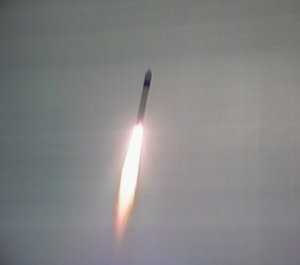Accept all cookies Accept only essential cookies See our Cookie Notice

About ESA
The European Space Agency (ESA) is Europe’s gateway to space. Its mission is to shape the development of Europe’s space capability and ensure that investment in space continues to deliver benefits to the citizens of Europe and the world.
Highlights
ESA - United space in Europe
This is ESA ESA facts Member States & Cooperating States Funding Director General Top management For Member State Delegations European vision European Space Policy ESA & EU Space Councils Responsibility & Sustainability Annual Report Calendar of meetings Corporate newsEstablishments & sites
ESA Headquarters ESA ESTEC ESA ESOC ESA ESRIN ESA EAC ESA ESAC Europe's Spaceport ESA ESEC ESA ECSAT Brussels Office Washington OfficeWorking with ESA
Business with ESA ESA Commercialisation Gateway Law at ESA Careers Cyber resilience at ESA IT at ESA Newsroom Partnerships Merchandising Licence Education Open Space Innovation Platform Integrity and Reporting Administrative Tribunal Health and SafetyMore about ESA
History ESA Historical Archives Exhibitions Publications Art & Culture ESA Merchandise Kids Diversity ESA Brand Centre ESA ChampionsLatest
Space in Member States
Find out more about space activities in our 23 Member States, and understand how ESA works together with their national agencies, institutions and organisations.
Science & Exploration
Exploring our Solar System and unlocking the secrets of the Universe
Go to topicAstronauts
Missions
Juice Euclid Webb Solar Orbiter BepiColombo Gaia ExoMars Cheops Exoplanet missions More missionsActivities
International Space Station Orion service module Gateway Concordia Caves & Pangaea BenefitsLatest
Space Safety
Protecting life and infrastructure on Earth and in orbit
Go to topicAsteroids
Asteroids and Planetary Defence Asteroid danger explained Flyeye telescope: asteroid detection Hera mission: asteroid deflection Near-Earth Object Coordination CentreSpace junk
About space debris Space debris by the numbers Space Environment Report In space refuelling, refurbishing and removingSafety from space
Clean Space ecodesign Zero Debris Technologies Space for Earth Supporting Sustainable DevelopmentApplications
Using space to benefit citizens and meet future challenges on Earth
Go to topicObserving the Earth
Observing the Earth Future EO Copernicus Meteorology Space for our climate Satellite missionsCommercialisation
ESA Commercialisation Gateway Open Space Innovation Platform Business Incubation ESA Space SolutionsLatest
Enabling & Support
Making space accessible and developing the technologies for the future
Go to topicBuilding missions
Space Engineering and Technology Test centre Laboratories Concurrent Design Facility Preparing for the future Shaping the Future Discovery and Preparation Advanced Concepts TeamSpace transportation
Space Transportation Ariane Vega Space Rider Future space transportation Boost! Europe's Spaceport Launches from Europe's Spaceport from 2012Latest
Cryosat Ready For Launch VNR
Introduction video to ESA’s Cryosat mission, prior to launch in October 2005. The video includes the following:
00.26 Cryosat New Release September 2005
00:43 Introduction: what will ESA obtain by Cryosat? Graphics illustrating Cryosat operation.
01:08 Malcolm Davidson, ESA’s Cryosat Validation Manager from ESA Earth and Science Divistion, explains why it is important to know exactly what Cryosat will measure: the change in ice masses on Earth.
01:35 Cryosat construction and testing in clean room
01:48 Professor Duncan Wingham, Cryosat Project Scientist and Lead Investigator, University College London, explains that the icecap on Greenland is melting worrying fast
02:10 Why is it a major problem that the Ice Cap on Greenland is melting very fast
02:23 Using radar technology, tested on previous ESA satellites such as ERS and Envisat, Cryosat will provide scientist with reliable 3-d models of the polar ice sheets, marine glaciers and floating ice.
02:41 Professor Duncan Wingham explains what this instrument provide in addition to previous measurements
03:04 Cryosat will be launched 8 October 2005 from Russia, onboard a Rokot launch vehicle. The plan is that it shall spend 3 years in orbit and relay data back to Earth to the Kiruna ground station in Sweden.
03:18 Scientists will be able to prove changing in melting ice and if the speed of the melting is increasing.
03:30 The End
-
CREDIT
ESA -
LICENCE
ESA Standard Licence
-
VNR
-
-
-
-
-
-
-
Animations Artist's impressions Climate Change Earth views (taken by satellites ) Ecological studies Envisat results ERS results Failed missions Forecasts Glaciers Global change Greenhouse Ground stations Ice Ice thickness Icebergs Icebreaker Illustrations Imager Images Instrument Instruments onboard Launch Launch failure Launcher Launchers artist views Ocean Ocean circulation Ocean currents Poles Radar Satellite image Satellite testing Sea temperatures Sea-ice Snow Snow mass accumulation Snow pack condition

Cryosat Mission

CryoSat-2 Mission Overview

CryoSat-2 VNR

CryoSat-2 the ground truth















 Germany
Germany
 Austria
Austria
 Belgium
Belgium
 Denmark
Denmark
 Spain
Spain
 Estonia
Estonia
 Finland
Finland
 France
France
 Greece
Greece
 Hungary
Hungary
 Ireland
Ireland
 Italy
Italy
 Luxembourg
Luxembourg
 Norway
Norway
 The Netherlands
The Netherlands
 Poland
Poland
 Portugal
Portugal
 Czechia
Czechia
 Romania
Romania
 United Kingdom
United Kingdom
 Slovenia
Slovenia
 Sweden
Sweden
 Switzerland
Switzerland


























